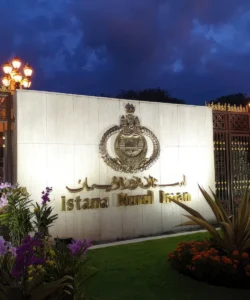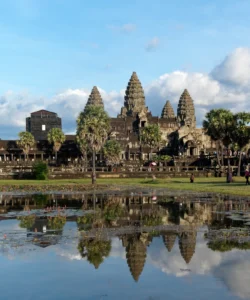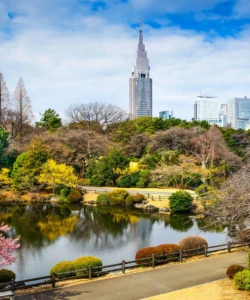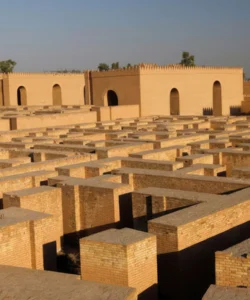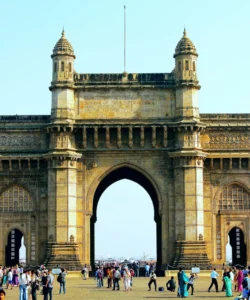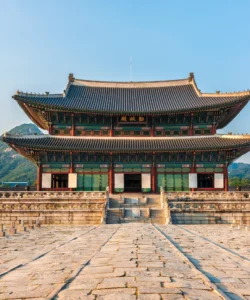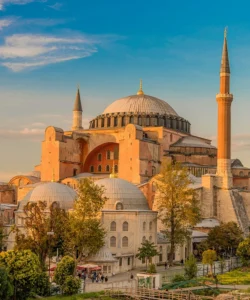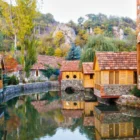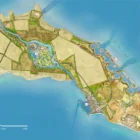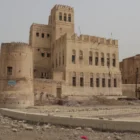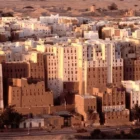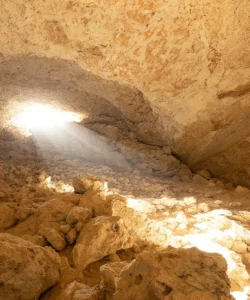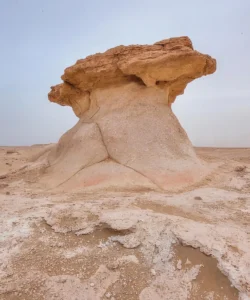Saint Stepanos Monastery (Armenian: Սուրբ Ստեփանոս վանք, Surb Stepanos Vank; Persian: کلیسای سن استپانوس, Kelisā-ye San Estepānus), also known as Maghardavank, is a significant Armenian monastery located in northwestern Iran. It is part of the Armenian Monastic Ensembles of Iran, collectively inscribed on the UNESCO World Heritage List, and is celebrated for its unique architecture and its historical role as a center for Armenian culture and faith in the region.
Listen to an introduction about Saint Stepanos Monastery
Name and Address
- Name: Saint Stepanos Monastery (also known as Saint Stephen’s Monastery, Maghardavank, or Ojagh-e Danial for one of its sections). It is named after Saint Stephen, one of the first Christian martyrs.
- Address: Approximately 15 km northwest of the city of Julfa, East Azarbaijan Province, northwestern Iran.
- Location: Situated in a deep canyon along the Aras River, on the Iranian side of the border between Iran and Nakhchivan (Azerbaijan). Its remote and fortified setting adds to its mystique.
How to Get There
Saint Stepanos Monastery is a notable destination in northwestern Iran, often visited as part of a tour of the region’s Armenian monastic ensembles:
- To Julfa City:
- By Plane/Bus: You can fly or take a bus to Tabriz (a major city in East Azarbaijan Province). From Tabriz, Julfa is less than a 2-hour drive.
- By Train: Tehran also has train services to Julfa.
- To Saint Stepanos Monastery (from Julfa):
- By Car/Taxi: The monastery is about a 15-17 km (9-11 miles) drive northwest of Julfa. The road along the Aras River is scenic. A taxi from Julfa usually takes about 25-30 minutes.
- Walking: From the car park, it’s a short uphill walk (about 300 meters) to the monastery entrance.
- Visitor Information:
- Opening Hours: Typically 9:00 AM to 7:00 PM (some sources indicate 8:00 AM to 5:40 PM, with a midday closure). It’s advisable to check locally for the most current hours.
- Entrance Fee: There is an entrance fee (e.g., 30 Toman for Iranians, 1,000,000 Rials for foreigners as of some past reports, likely subject to change).
- Accessibility: Note that access may be difficult for people with heart conditions due to the uphill walk, and there is generally no public transportation directly to the monastery.
Landscape and Architecture
Saint Stepanos Monastery is a striking example of Armenian architecture, dramatically nestled within a deep canyon and fortified against its surroundings.
- Architectural Style: The monastery showcases a blend of Armenian architectural and decorative traditions, with influences from Byzantine, Orthodox, and Persian cultures. Its construction dates back to the 9th century, though it has been rebuilt and restored multiple times, particularly during the Safavid era after being damaged by wars and earthquakes.
- Fortified Complex: The monastery has a largely rectangular plan (approximately 48.3 x 71.7m) and is surrounded by a fortress wall with circular towers at the corners and semicircular towers along the walls for support. This fortification highlights its historical role as a protected sanctuary.
- Main Structures: The complex includes:
- Main Chapel (Church): Located under a high, cone-shaped dome. The facades feature sculpted scenes from the life of Jesus (Annunciation, Virgin and Child, Crucifixion, Resurrection) and the martyrdom of Saint Stephen. The dome’s drum has sixteen sides, symbolizing apostles, God, the Virgin, St. John the Baptist, and St. Gregory.
- Ojagh-e Danial (Boghos and Bedros Church): A smaller, one-floor church, approximately 20 meters long and 6 meters wide, located between the northern wall of the main church and the northern rampart. It has an altar, a gathering hall, and a baptism font.
- Bell Tower: A notable bell tower, often described as having a pyramidal and octagonal dome supported by eight red stone cylindrical columns.
- Other Sections: The monastery also includes a religious school, a historical museum, and residential areas for monks.
- Interior Decoration: The interior walls are adorned with beautiful mural paintings, some by Hakob Hovnatanyan, a renowned Armenian painter from the Safavid period. These paintings often display a unique syncretism of Christian and Islamic art.
- Materials: The buildings are constructed with various materials, including alternating brown and red limestone slabs, which give the walls a distinctive appearance.
- Landscape Integration: The monastery is nestled in a superb mountainous environment, on a wooded hill above the Aras River. The scenic drive and surrounding unspoiled nature are integral to the visitor experience.
What Makes It Famous
Saint Stepanos Monastery’s fame is rooted in its unique blend of historical, religious, and architectural significance:
- UNESCO World Heritage Site: It is one of the three monastic ensembles (along with St. Thaddeus and Chapel of Dzordzor) that constitute the Armenian Monastic Ensembles of Iran, collectively inscribed on the UNESCO World Heritage List in 2008. This recognizes their outstanding universal value in showcasing Armenian architectural and decorative traditions and their cultural interchanges with other regional cultures.
- Architectural Beauty: It is considered one of the most beautiful and renowned Armenian churches in the world, admired for its intricate carvings, unique dome structure, and well-preserved reliefs.
- Cultural Crossroads: The monastery bears testimony to important cultural interchanges with Byzantine, Orthodox, and Persian cultures, evident in its architectural and decorative elements.
- Historical Resilience: It has survived centuries of human conflict and natural disasters, being rebuilt numerous times while maintaining its Armenian cultural traditions.
- Spiritual and Intellectual Center: Historically, it served as a major center for the dissemination of Armenian culture in the region, attracting scholars, calligraphers, and painters. Many valuable manuscripts were created here.
- Scenic Location: Its dramatic setting in a deep canyon along the Aras River, amidst stunning mountainous landscapes, significantly adds to its allure.
Differences from Other Historical Sites
Saint Stepanos Monastery distinguishes itself from other historical sites, particularly those in Armenia, in several key ways:
- Geographical Location: Unlike the monasteries located within the Republic of Armenia (such as Geghard, Tatev, Noravank, Etchmiadzin, Zvartnots), Saint Stepanos Monastery is situated in northwestern Iran. This makes it a crucial site for understanding the historical spread and influence of Armenian culture and Christianity beyond modern Armenia’s borders.
- Shared UNESCO Listing: It is part of a collective UNESCO World Heritage listing (Armenian Monastic Ensembles of Iran), highlighting its shared heritage with other Armenian monasteries in Iran, rather than being a standalone site like many in Armenia.
- Cultural Synthesis: While Armenian churches generally have unique styles, Saint Stepanos particularly exemplifies a rich synthesis of Armenian architectural traditions with significant influences from Persian, Byzantine, and other regional cultures due to its location at a historical crossroads. This is often more pronounced than in churches solely within Armenia.
- Fortified Monastery in a Canyon: While some Armenian monasteries are in gorges (like Geghard or Noravank), Saint Stepanos’s specific combination of a heavily fortified structure within a deep river canyon on an international border gives it a distinct character.
- Focus on Diasporic Heritage: For many Armenians, especially those in the diaspora, Saint Stepanos (along with St. Thaddeus) represents a vital piece of their historical and religious heritage outside the modern Republic of Armenia.
Saint Stepanos Monastery Photos:
































